Search the Community
Showing results for tags 'advice and tips'.
-
- 16 replies
-
- advice and tips
- nuggetfinder
-
(and 1 more)
Tagged with:
-
I would like to report what I discovered today during a session on the bottom. For a long time I have been complaining about instability in P12 @ 40Khz while in saltwater. So today by changing audio filter to 1 while before it was on 4 I finally got the ability to increase sensitivity and decrease reactivity. It seems that the prolonged tone by higher A.F. in pitch not only makes difficult to locate the signal (even with 9" coil 😒) but increase falsing too. At the moment I am not going to give an opinion as I was going to leave the beach when I accidentally gained audio stability and I will need more tests.I will tell you...
- 2 replies
-
- advice and tips
- underwater detectors
-
(and 1 more)
Tagged with:
-
Hey all, New to the forum, and the hobby, and need some advice. I've "discovered" an old farmstead near my house here in East TX that was on some of our oldest maps (since 1916!), and was occupied through the 1960's before it was bulldozed in the '70's and the land purchased by one of our school districts. The area of the house and barn are now an open field behind a school. I have secured permission to detect there, and as far as I can tell it has not been touched since it was leveled. It certainly hasn't been detected, as I've already found one coin spill that was mostly older clad ('60s-'70s), but did find one 1945 P War nickel that makes me hopeful there's older stuff there. Anyway, I've been preferring (for my sanity) to work the open areas away from the old house foundation due to the overwhelming amount of trash. There is literally both ferrous and non-ferrous trash carpeting the area. My Nokta Legend (I'm running the stock 11", but just ordered the 6" coil) has actually been doing an amazing job of discriminating (I use a custom 6-tone program based on my reading and youtubing), and I've been able to find clad pennies and nickels deep amongst aluminum slaw and rusted iron galore. But, if I get too close to the old house there are just too many signals to deal with and it's overwhelming. I could literally spend hours in a 100 sq ft area investigating every potentially good signal (soooo many old Budweiser cans and TV trays, lol) and scraping slaw out of the top 1" of the ground. So, my question to y'all is, how do you approach a site like this? Would you "clean it up"? Or do you think that is not worth the time and effort, and I should just stick to the areas I can sanely cover the most ground in the few hours I have available on the weekends? Are there any areas around an old house you would focus on if you had time? What would your approach be? I realize this is a good problem to have, and I am looking forward to hearing your advice!
-
-
Hey all, I'm delighted to join this community. I'm Jolin from SAKOBS. 😊 I'd like to ask all of you metal-detecting enthusiasts if you'd be willing to assist us in experiencing and testing our latest development, the GC-1078 metal detector. This detector is still designed for beginners and newcomers to the world of metal detecting. If you're open to lending a hand in trying it out and providing genuine feedback, such as areas for improvement or suggestions for additional features, please leave me a message. Thanks again!🙏 Best regards, Jolin
-
This article makes me wish I lived closer to the gold field up in that area! There's Gold in Them There Hills...or, at Least Across Washington (newstalk870.am)
-
- advice and tips
- gold news
-
(and 1 more)
Tagged with:
-
Today was my first go at detecting after left inguinal hernia surgery last Friday (5 days). I had to get my fix and see my favorite beach. The first challenge was to put on my rubber boots. I could get my right boot on normally but when it came to the left sock it was not possible or wise to bend my leg and twist it at the angle I normally would. Once the sock was on I could jam my foot in pretty much ok. My idea was to 'cherry pick' but conditions really weren't good enough to have many choices of what to dig. I walked and walked (with no pain) but there just weren't many targets on the way out. Conditions weren't very good at the bottom of the slope. On the way back there were more targets and the uneven slope made me start feeling some tingles from the incision and the repair site. Digging was comfortable with the left hand only with my arm scoop. Bending and pulling at the sand was restricted so that I didn't over-do-it. I don't use a foot/shovel scoop. Using two hands caused pain that I wanted to avoid. In the end I had 1 quarter, 1 dime about 5 pennies, 5 pieced of trash and a really deep (18") aluminum can bottom in my collection. That was good enough. So, my questions are: "What did you do for your rehab to get back to your digging?" "Do you have any cautions or horror stories to share?" I'm not ready for a nugget trip based upon what I learned today. That could be too challenging until I have more healing time.
-
The great debate of DISCRIMINATION, Iron ID and Target #'s when detecting for Gold. The war of words is about to begin. So lets try to stay on point and be courteous of others ways/ideas or skill levels for those who are newer to the game. This is an open end post and all who respond, reply, ask questions, disagree and or partially agree is 100% totally fine and discussion desired. So many times I’ve heard from the Experts who detect for gold, they say “Dig It All” and to never used Discrimination. So I guess there really is no debate? Just do what the Experts do and live with the results. Is that such like good advice from so called Experts. So if this is the case, then why do the detector manufactures offer it (discrimination or ID) on their machines? VLF Gold type detectors have had Iron Identification on some models since the 1980’s and I also know earlier General Purpose detectors offered DISC as far back to the early 70s. I imagine those of you who have been around for longer than I could even know of detectors with such capabilities go back before the dates I mentioned? Heck, even Minelab Pulse Induction detectors in the 1990’s provided Iron DISC feature. So are all those manufactures and variety of detector models, just selling us bells and whistles? Remember what so called Expert says, “dig it all”. The manufactures have to know something? Maybe there are times and or locations that Discrimination and or Iron ID is indeed a needed feature? Maybe the models with such are for dummies who know nothing as they have never spoken with an Expert? Could said Expert who does this for a living be wrong? Well most certainly not in his mind anyway. I’m going to give you my reasons why I end using detectors with the Iron ID or Discrimination features and I’ll even go into detail of using both the traditional VLF’s and the more robust Pulse Induction power detectors. I’m not an Expert and I do not do this for a living (well I do not hunt gold for a living), but I do sell detectors as my full time job. So since I’m not an Official Full Time Prospecting Expert, does that mean the knowledge I have of various detectors not count? That is to be debated down the road. I will say this though and those who know me for many years know I can back up my words with the amount of gold and the sizes of gold I have recovered. 1st off, when you are out there detecting, I want you to do what you are most comfortable with and what has provided you success on previous trips. I’m not here to make you change your ways. In fact, those of you who are just as happy with your results and not using DISC., I totally understand you are not about to change your ways. That’s totally fine with me…I’m happy for you. It’s the rest of the folks who are newer to the game of Electronic Prospecting for gold and or even those who are experienced hunters that have decent success…but you are wise enough to realize at times ..just maybe there is a better way at doing it? This article is for those folks. The average guy who goes detecting a few times at the same locations with a little jingle in the pouch. Your success at those sites tell, you’re doing it correctly so you’re quite pleased, happy and not willing to change your ways of thinking or doing things. I’m fine and happy for you. But, sorry that is not me. I’m all about Adventure and Travel with detectors in hand. I enjoy new detector technologies and trying to find ways to make them perform better for the task. I like gold and the varieties of gold I pursue is quite varied when compared to many other folks who chase it. I don’t know if it’s because of my knowledge and skill level of gold detecting or just that others are stuck in a pattern and don’t know any difference? My travels in pursuit of gold have guided me to more states than most (NV, OR, ID, MT, SD, WY, AZ, AK) 8 to be exact and 2 different countries (Australia and Mexico). I’m not counting gold jewelry and coins/artifacts (my list would be much larger), just natural Au gold in it’s raw form. All the states and countries I mentioned, I have had success with my metal detectors. In fact, I have yet to hunt a state and not find gold with a detector. CA, CO and UT will eventually get checked off my list. OK, back to the Discrimination/Iron ID discussion and why I want it on my detector tools. Why I feel DISC and Iron ID are of desired features on a metal detector and there are many times when they need to be used. Those features save me time and energy. Both Time and Energy are something I desire more and more each year and seem to get less and less of. A detector with the features of DISC and Iron ID can save me Time and Energy when digging. When I use a detector with such features, I get to SELECT the amount of targets I want to dig. Here is a typical situation I experience many times in my hunts. I hunt gold where gold has been found and I like to detect in such sites. Here are the main sites I prefer to hunt and use DISC and or ID machine. Old hand placer workings, Ore dump piles, and Dredge Trailing Piles. These golden grounds were proven producers at one time and they leave plenty of targets for us. Old hand placer workings (6 pics below of Au digs using PI DD coils with DISC or VLF's with VDI Readout) In OR, NV, ID, MT, and SD. The problem is most of the targets are trash and many of the trash items are man made iron. My DISC and Iron ID capable detectors save me time/energy in these gold rich locations. Using common math to show. How many times will that person dig in an hour? How many hours a day will that person hunt? How many days on that trip will they swing the detector and dig targets? Let’s say a person can dig 10 targets an hour and 6 hrs a day = 60 targets for the day. On average, average site produces 15 non ferrous targets and 45 iron targets. So of the 15 non ferrous targets, lets say 20% are gold (3 pieces of gold) of the 15 nonferrous targets and of the total 60 digs. In Eastern Oregon those numbers are pretty close. Here is where I like the ID. I can save Time and Energy by not having to dig 45 iron targets. I now am digging more non ferrous targets than the average guy so my gold count goes up. Say I saved T&E on those 45 iron targets so I still get the 15 Nonferrous, but the extra T&E allows me to dig 15 to 25 (not 45) more targets that are Nonferrous. I’ll be extremely on the cautionary side and say I only dug 15 more NF targets. That ends up 2X my gold count for the day and also still saved me T&E. Plus as well all know, the extra boost of finding more gold seems to earn me a little more Energy. Ore Dump/Hardrock Piles- (5 pics of success using VLF's & their Identification systems) Many areas I hunt in NV, ID, MT, OR and I’ve seen many in AZ have such hard rock ore dumps. Do you know the preferred detector for this kind of gold? Do you know if you take a target identification VLF and use it at such sites, you can recover more desired nonferrous targets. I select only certain VLF type detectors for these sites. Iron ID is nice and if that is all I have then most certainly, I use it. But I know (from previous testing) that certainly VLF gold capable detectors can go a step farther and provide me with even greater odds of Success at gold and saving me T & E. Dredge Tailing Piles – (8 pics of gold using VLF's & their ID features) Love hunting these locations and my success in Tailing Piles of ID, OR, AK, NV is golden. Some of my largest gold recoveries are from such piles and the funny part is most all of them were recovered with VLF detectors using Iron Discrimination. Why you ask? Because in dredge tailing piles, even a VLF detector can pick up a rail tie spike at 12” down. Even a VLF can hear a rusty prospectors tobacco tin or smashed sardine can at near a foot and a half deep. Even a VLF detector can hear at depths of 2 feet down for a rusty grease bucket or lid to a 55 gallon drum. How about the 55 gal drum itself…well I know for a fact some VLF detectors will respond pushing near 4 feet down. Are you man enough to dig those monster holes in loose rocks and gravel? If you have never attempted it, good luck. The material you are digging keeps caving in as you go down and the next thing you know…after 45 minutes, you have a 4 foot wide and 3 foot deep hole. Only another foot more to go. Oh those days…can kill an old mans ego for the whole trips…I’ve seen it happen. As you can see from the Success pictures, the ability to use Iron ID on Pulse Induction & VLF detectors has proved golden. Now, taking today's newer Identification ID machines a step further saves me much time on pursuing only the best and most probably signals to dig. No, there’s no magic to it, but I’ve learned a lot more than most about different kinds of gold and how it reads on these ID machines. So many of the sites I currently hunt, the bigger solid nuggets are gone and have been for 10+ yrs. But there’s still some of that specimen stuff the older technologies missed. Sites I enjoy detecting are the trash areas most others try for an hour or 2 and then they walk away is discuss. They’re tired of digging holes and finding iron nails, boot tacks and shovel heads. Sure, I dig a few of those shovel heads, but not as many as most others do. I’ve spent the time in the field and learned. I’ve purchased most of the newer technologies and tested/compared each to see how they stand. No one detector does it all, but I know this. I quality PI and a new technology VLF sure does cover most bases. After all, I can tell you with fact, that the last 5 yrs, my gold finds are better than most and the majority were recovered using my techniques in the locations I mentioned. It’s hard to beat what works and puts the gold in the safe. Knowing where and how varying gold finds register on your VLF detector is crucial. Here’s an example of what most folks encounter when in the field at an old gold producing site. Ore dump piles, are full of rail tie spikes and blasting caps. Also seems to be a beacon for lead bullets of a variety, but usually .22 and 9MM slugs. Many of my gold recoveries from these sites, the newest of VLF gold detectors can ID the difference between such targets. Also, the majority of gold specimens in a certain pile, seems to ID the same #’s or very close to it. Yes it does take practice and time to learn, but in the end, you have knowledge to be selective and save time/energy. Hand working placer digs has a bigger variety of trash items and one some of my locations, the gold is thicker, more dense and reads different. I usually use VLF ID’s to help identify and ignore the high conductor targets while concentrating on the lower ones. Most gold (not all) will read in the low to possibly medium range. Even using a Pulse Induction detector with Iron DISC is possible and quite rewarding. Dredge Tailing piles are a lot like hand placer workings, but they provide even a bigger variety of trash. These piles are the hardest to learn and use a PI detector. I prefer a VLF for most of the tailing pile hunts I do, as the machine itself is much lighter and easier to swing on side hills all day. Besides I don’t want to dig 2’ or 3’ deep holes and those occasional 4’ ones will practically kill you. On the rare occasion there is big thicker gold (Ganes Creek, AK). I recommend if you swing a PI, you better have a quality VLF detector handy to help ID as you dig. So many varieties of gold and the areas, terrains and methods they were minded in the US. Australia and other countries of the gold bearing regions are different and those of you from there may not see any use in my techniques and style of hunting or the detectors I use. That’s totally understandable and I have no issues. But if you do have hard rock ore dumps and hand placer workings with trash, it might be worth the time to swing PI and DD coil or a VLF with good target identification. I look forward to hearing from those who use my techniques and I also want to hear from others who might have things to add. What is most important about this post and discussion is the actual discussion and sharing of knowledge. After all, that’s why were on here right? Thanks for your input and reading.
- 22 replies
-
- advice and tips
- gold found
-
(and 1 more)
Tagged with:
-
Hello, first of all I've to say that english is not my native language, so please be kind, if my words don't hit the right expression... To the topic: I'm from germany and at the end of the year I'm going to receive my license to go detecting on a field. By now I own the Tianxun TX-850 (Teknetics G2 plus Clone) witch should be good for the price. Till now I could only use the detector on the beach, where no license is necessary. I wonder if it's worth investing money in the Legend? I will mainly go hunting on fields ( Fibeln, Coins,...). I know the the Legend has multifrequence feature, but I don't really know if it's really a game change or just a hype. Maybe one of you own both detectors an give some advice regarding detection depth, sensitivity for small parts and so on... Best regards from germany
-
We are off to Norway in July for two months. I will have a couple of (I hope) well chosen detectors for the usual run of field, meadow, park stuff. One thing though. there are things older and deeper than my VLF's will find. I detected in Norway a lot in the 90's and found nice stuff, but I didn't have anything which could go to depth on any metal targets which existed. One interesting thing (sadly) in Norway's history is that th eBlack death hit Norway very hard. about 65% of the population died. Unlike more settled village and town settlement patterns in Europe which helps recovery, the Norwegian population was largely rural on individual farm sites. the place names all over Norway are sprinkled with places, now often in the forest - Called ødegård - old abandoned farm. Having a detector which could double VLF depth in all metal could be a really interesting exploratory tool. Mind you, any objects dating from the mid 1600's are National treasure, but I am not looking to supplement my vacation budget and I would fully comply with the rules about that. I am thinking a ML PI with a more modern battery arrangement which I could manage to legally get on the plane. I don't care about small gold - there isn't any - Would an SD be fine, or is there a reason to go to the GP or GPX range. light is better and old lead acid or other bulky batteries are not good for air transport or my old bones. Your thoughts.
-
I enjoy exploring/boondocking in very remote locations and my next month-long trip will be focused on metal detecting. I am hoping to get some input from some of the people here about what barely accessible locations may be promising for nuggets. My priorities: Nuggets, not interested in artifacts, lost treasures, etc. I don't prefer locations where I know others have detected already I'd rather get less gold if it means less trash The more remote, the better. I'm not asking for a treasure map to anyone's secret potato patch. Just wish to know what general area you would think worthy of exploration in light of the priorities I've listed. Thanks in advance for any feedback!
-
I have a typical newbee question. As a general rule of thumb in order to maximize your metal detecting spend I am curious if it is better to obtain different coil sizes for your existing detector or purchase different detectors? I already own a PI and a VLF machine since the underlying technologies appear somewhat different. I want to know what everyone's advice is on the subject.
-
When I go out to do some serious detecting or panning for gold I always get a little hungry and grab the old jerky. I would like to see if anyone else does this and if so share your recipes so others might like it. I will pick up a nice ribeye and have it sliced about an 1/8 inch thick and smoke it for a few minutes on the grill. Then I will marinade it in a teriyaki sauce from my local restaurant over night. They have the best Chinese food around. Then place into the dehydrator and leave until done. I found this to be really good and fast with friends eating most of it. Remember to have plenty of water along to stay hydrated.
-
This is not a classified ad just a question. When I purchased my Equinox 800 they threw in a Free Minelab EQX15 coil . It's still sealed in the bag. I wanted a pinpointer but the shop I purchased everything at was sold out of all brands. Does this coil have enough value to trade for a pinpoint? Again I'm not selling or trading here just asking if it's worth looking into or offering it for a trade. The store said all he could do is next week he could do a even swap for a smaller coil I think a 8" . All in using now is the included EWX11 .
-
I have a dilemma I hope my fellow forum members could help me with. My daughter expressed her interest to get a detector for her and her boyfriend to use. My dilemma is I have not really followed the evolution of vlf detectors since the Whites MXT days. I still use my MXT and ML 4500 for nugget hunting. I would say I had better then average success with both detectors, but I simply have no idea on what to recommend for 2 -20 somethings on choosing a vlf detector. Their primary interest would be to hunt relics in the gold fields, coins & jewelry on the beaches and on occasion gold nuggets when visiting the Sierras foothills. I was looking at the Minelab Equinox 800 w/ wireless headphones, Nokta Legend as far as those I have NO idea. They are pretty savvy with tech, I would imagine wireless headphones are a must and a machine simple to learn for first time owners. I am open for suggestions..appreciate the help fellas.
-
This Tailgate Talk brings us to the Australian Outback with Detector Prospector, Steve Herschbach. Steve shares his tips and the success he has had over his 50 years of gold prospecting. Everything said in the video makes a lot of sense, totally agree. I had the help from JW that gave me the shortcut to finding gold and giving me the confidence. A huge shortcut to success. That's where the training courses would help people too I guess. The old saying the first one is the hardest is really true.
-
I decided to work a patch near some power lines today and was reluctant to use the larger DD coil even though it works great here at eliminating most EMI interference. Usually I always run the 6000 with the threshold on for hearing the fainter signals better, but today I decided to keep the 9" mono coil on it and lowering the sensitivity to manual 5 and also turning off the threshold. This resulted in no EMI interference using the mono coil. The sensitivity was still fairly good and I was picking up the little bits pretty good. This also allowed me to turn the threshold back on when moving farther away from the power lines without doing several coil swaps throughout the day.
-
Does anyone here hunt with a pace maker installed. Dr wants me to get a pace maker, but I want to know if I would need to quit detecting. Any input would be great to hear. Thanks.
-
I’ve booked a trip for a week in July at AK/AU Gold Camp in Nome. They do rent Metal detectors and they’re part of the package. Other than the Gold Monster 1000 and Nox 800, I’m not too familiar with the other Minelab products they might have available. I was thinking about taking my Garrett Axiom. I have two concerns. First, what’s the best way to get it there? I’ve heard that Lithium batteries should not ride in an unpressurized area like a cargo hold. I suppose I could carry it on in the convenient backpack everything fits in. Second, how will it handle the Alaskan ground? I’ve heard that VLF machines work better there. Thanks in advance!
-
I read an opinion article in NYTimes about challenges in higher education (college specifically) that I think has relevence here, at least to some. [Here's a link to the article, included mostly for ethical reasons, but also in case anyone wants to see the entire thing. Author's name is Jonathan Malesic and he's a college instructor (professor?).] Now I quote: (A) big obstacle to the willingness to learn is the urge to present yourself as always already informed. The philosopher Jonathan Lear calls this attitude knowingness. He regards it as a sickness that stands in the way of gaining genuine knowledge. It is “as though there is too much anxiety involved in simply asking a question and waiting for the world to answer,” he writes. (And Later:) Every semester during my years teaching (subject), students would tell me on the first day of class that they knew they would get an A, because they’d already had 12 years of (classes in that subject). But often enough, they’d get a C. Their assumptions about the subject matter kept them from learning the more critical approach to the subject I was trying to teach. Knowingness is a danger especially for talented students who have been rewarded for always having the right answer. First off, metal detecting isn't a college class. Some people use it as a temporary escape from whatever (job, family commitments, etc.) and for the most part I see nothing wrong with that. Others (myself included) need more. I enjoy the "thrill of the find" as well as the broader "thrill of the chase". But those don't come on every hunt and even on the best hunts only once or if real lucky, twice per hour. My brain wants other challenges and trying to figure out what's going on -- why those noises and VDI's? -- is also valuable for me in both the short term and long term. So the above excerpt is relevant to me and hopefully some of you. I'm the first to admit I get in a rut, often. As an example, yesterday I was able to get in my first hunt in since 2nd of December. I had three goals: 1) choose a site with a slope I could work since we've had a lot of precipitation recently and the ground is mostly saturated, 2) choose a site that might help decide if my upcoming Manticore purchase potentially leads to finds the Eqx 800 either couldn't get or (more likely) couldn't recognize as targets in my desirable range, 3) choose a site that had potential of still a few good finds, even though I've searched it recently. I also hoped it would have some ferrous trash because that always seems to be a contributor in making a site/detector difficult. Lastly, I wanted to detect an area which I previously hunted in one direction, now planning on hitting it from more/less 90 degrees different direction with the thought I might be able to find desirable targets I previously missed. I decided to try a bit outside-the-box on my settings. I stayed with Park 1, 5 tones (all VDI's accepted), gain = 22 but instead of my standard Recovery Speed (RS) = 4 I went with 5. (Oh, I'm such an adventurer! 😆) I also tried Iron Bias F2=6 (instead of my usual F2 = 0). In addition I made it a point to listen as carefully as possible to the audio signals, both in search mode but aslo in pinpoint mode. Well, did I stick to my plan? I lasted all of maybe 10 minutes in RS = 5 before reverting to my comfort level of 4. And I stayed with the non-zero Iron Bias level for even a shorter time! My rationalization was that for this site (not overly trashy) those settings work fine, as previous hunts had proven. But was I right? 🤷♂️ Or was I closing my mind? I did spend mental effort listening carefully to the sounds, and although I have much to learn there, felt I made some progress. I've seen an evolution in thought processes even in the short time (7+ years now) I've been on this site. I've read some books written a couple or more decades ago with advice, sometimes almost dogmatically stated, about how to set up detectors as well as how to approach a particular hunt. Many of those have been questioned if not completely refuted by some (I'll say as many as a dozen) posters here. That takes both an open mind but also courage. I hope to emulate that when I get my Manticore -- keep an open mind and don't be afraid of stepping outside my own box as well as the box of conventional wisdom. (BTW, in case you were wondering, I found a 6"-7" deep 1946 -- common date -- Wheatie that I had missed previously. Successful 3 hour hunt even not counting the new knowledge. 😁)
-
Hello I need a battery cover for a Garett Hunter 7. Any ideas?
-
Ethan is looking for a second hand detector, as someone who's never bought a new vehicle in my life I get it. But there are certain things I may not buy second hand, detectors may be one of them. If I was buying a detector that I was completely familiar with then yes I would, but what happens when you have never used the machine before. There are many factors to consider here, The amount of money involved is one I guess, second hand GPZ 7000's and GPX 6000's are holding their value pretty well in Australia, is the saving worth the risk especially when you consider that if you haven't used the detector how do you know if it's working properly. If you are looking for older or cheaper machines then this becomes less important. As some one who may consider buying an expensive P.I. machine secondhand, I would like to hear how others have approached this and how many would never buy a used machine and why ?
-
I would like Everyone's thought on this. My Father is planning to buy a gold detector from a brand called AKS specifically AKS Multi GFIS 3d. I found the brand not very trusting cause it has few reviews and they are not very active in their official YouTube channel. Did anyone knew about this brand?
-
Hey guys, I was recently contacted by a local person with a personal treasure story. Apparently this woman's ex-boyfriend buried a box with several gold bars in their back yard. It was meant to be a surprise for her but he tragically died in a car crash and didn't get the opportunity to present her with it. She learned of this recently after his death. She knows which property it's located on but the area is 1/4 acre in size and she figures it's buried 4-6 feet deep. There are apparently several gold bars the sized of Hershey bars. There is supposed to be other treasures but she doesn't know what those are. She doesn't know what kind of container this stuff is buried in. If it was metal we could find it pretty easily with a magnetometer but she's not sure. What technologies are available to detect at that depth? I'm not aware of any detectors that can reliably go that deep.
-
I'm not new to prospecting or metal detectors but I am new to owning a PI machine I've used the gpz a lot but never owned a PI so now I have a Whites TDI and I'm wondering rather to turn my thershold all the way down so I only hear targets or to hunt with a threshold like I see my cousin do with his gpz 7000? Any positives or negatives. I'm not a fan of bees in my head but I will keep it if I get say better depth.

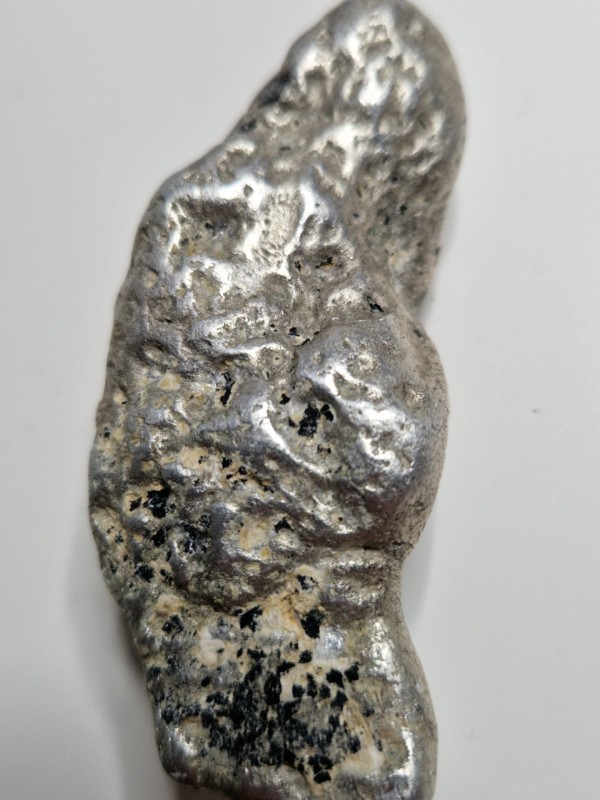

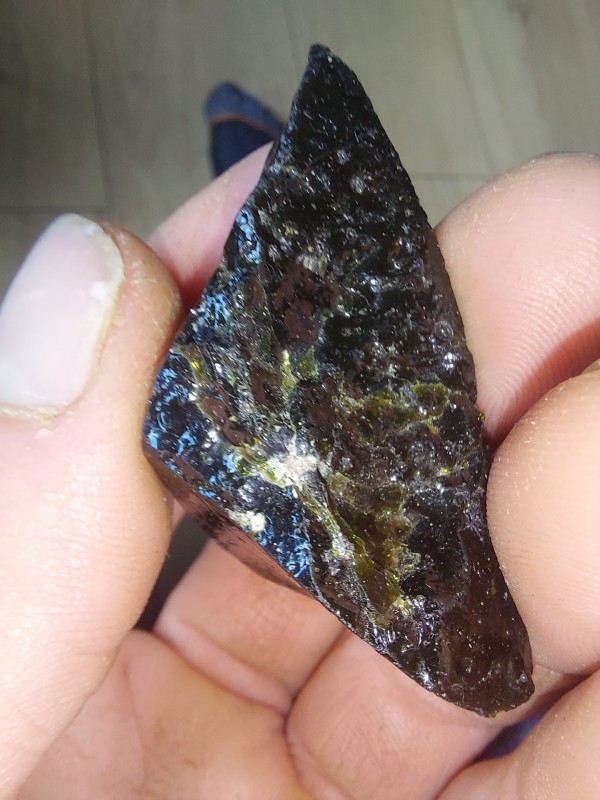
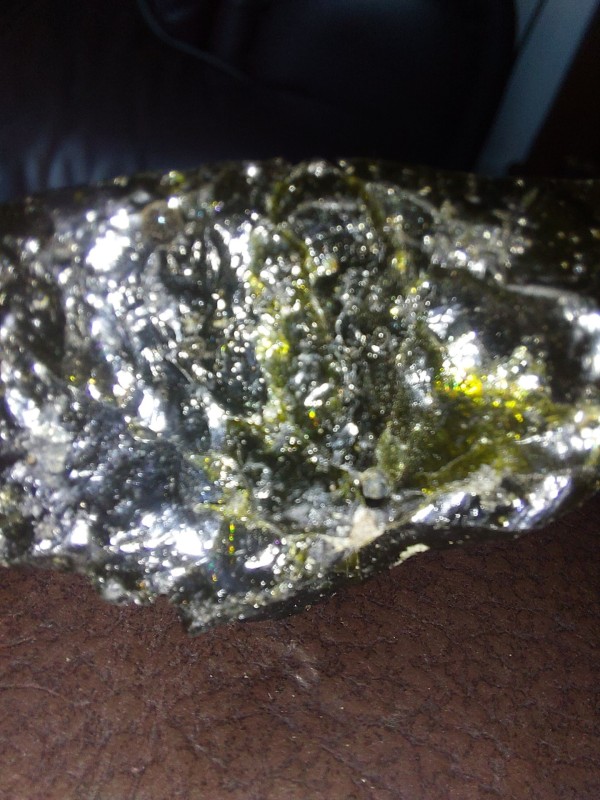
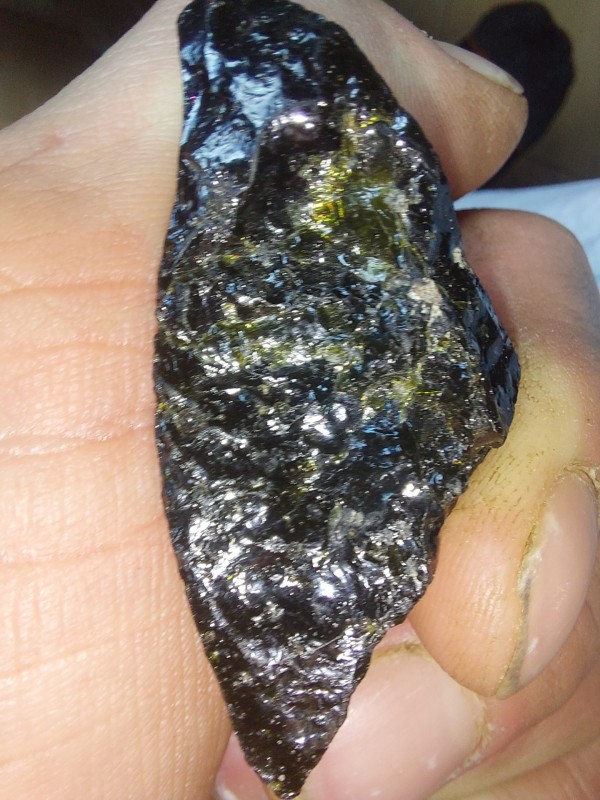
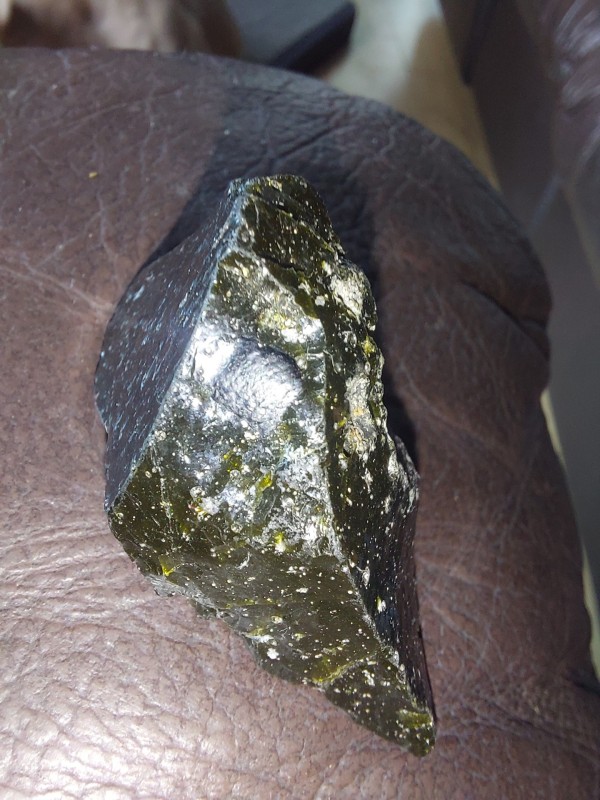
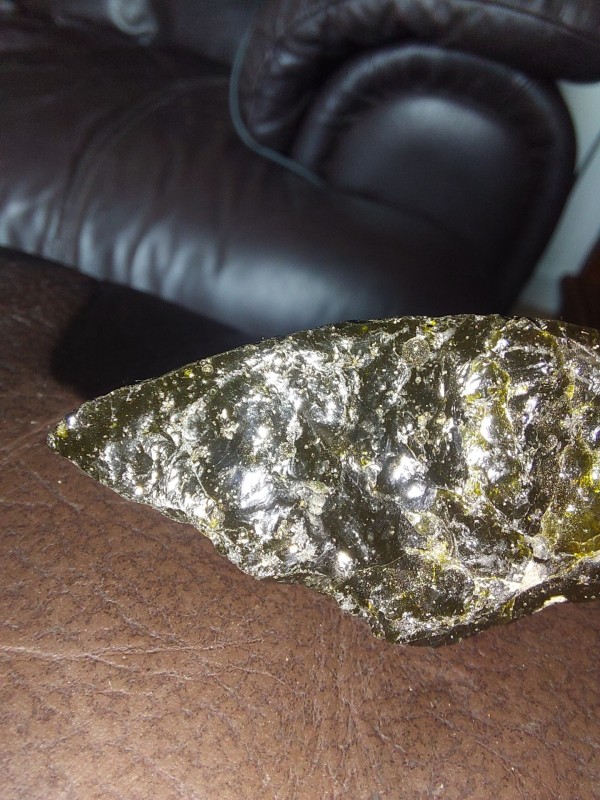
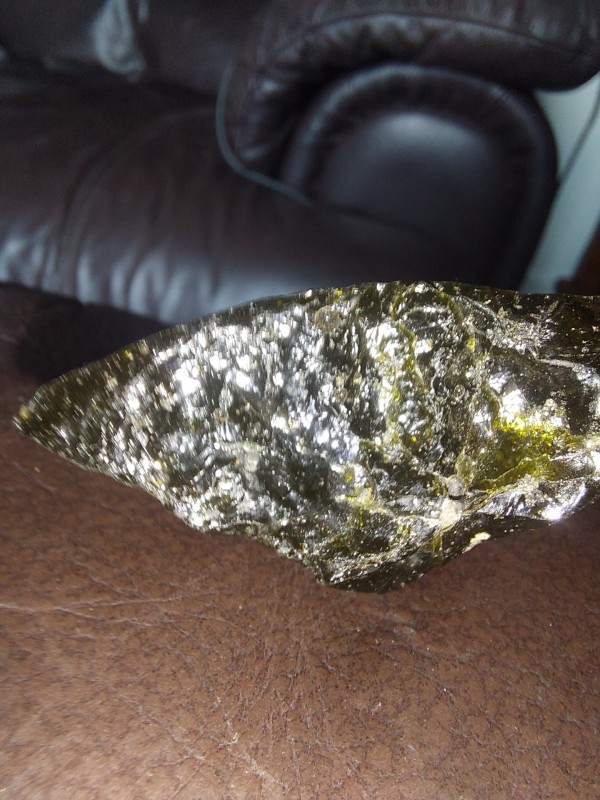


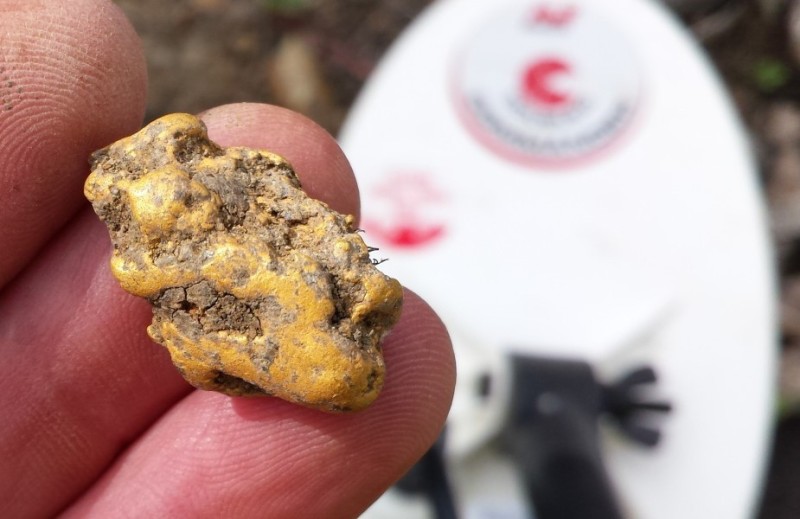
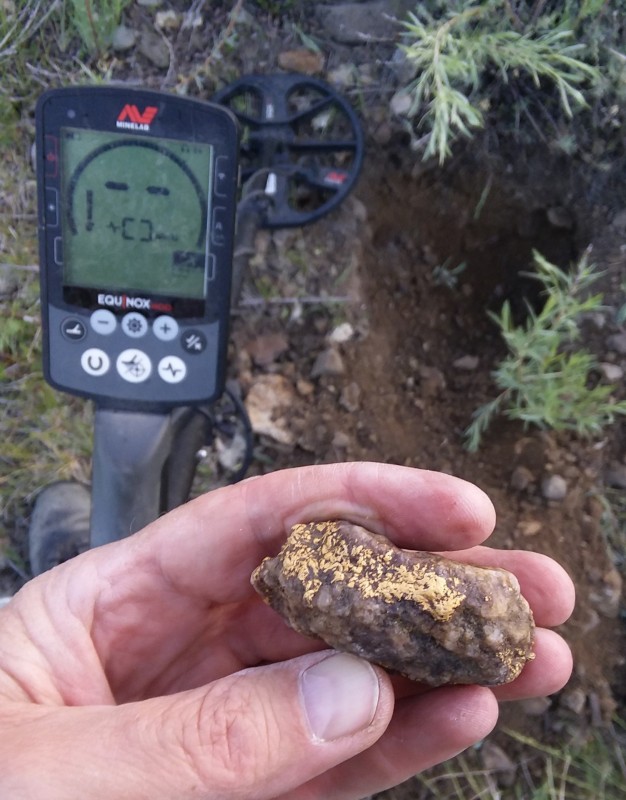
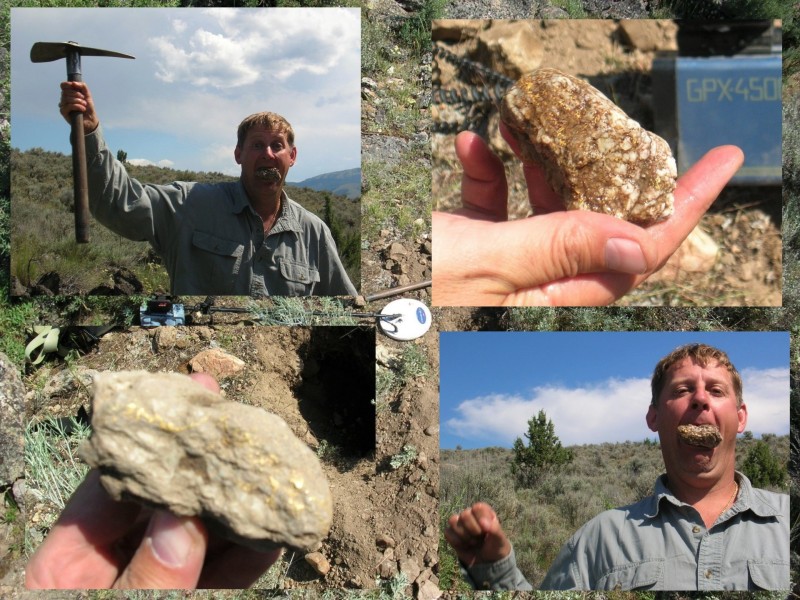
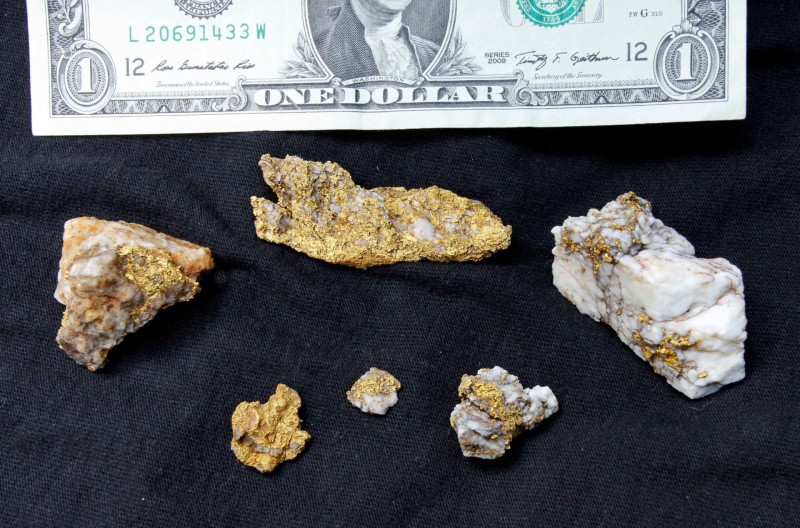
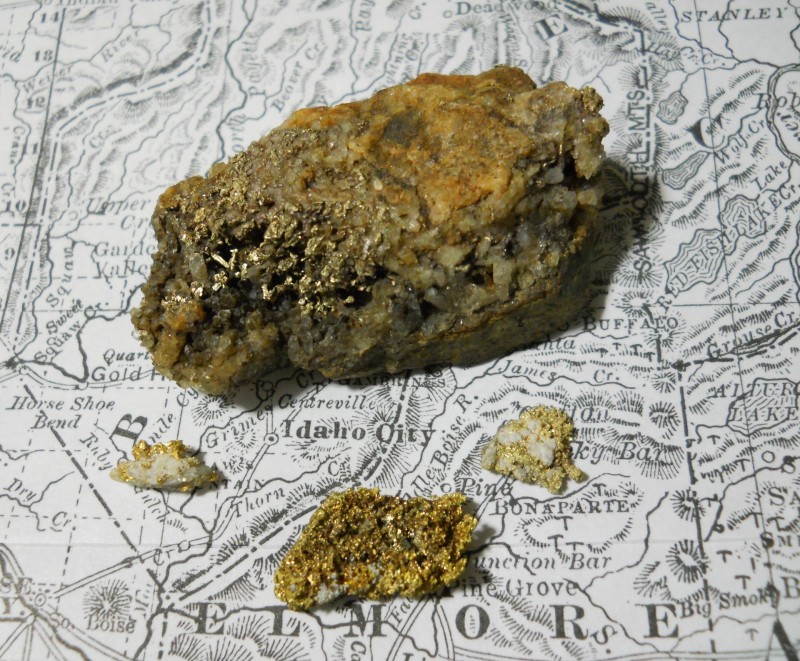
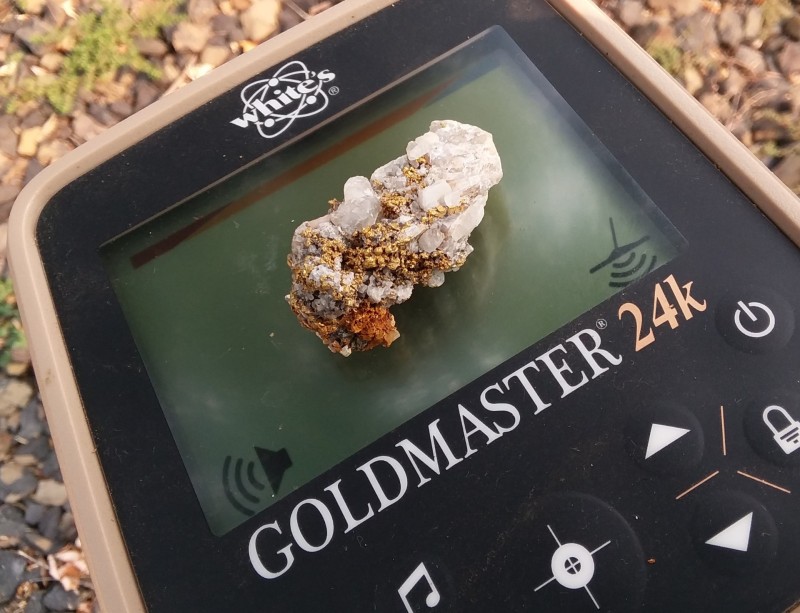
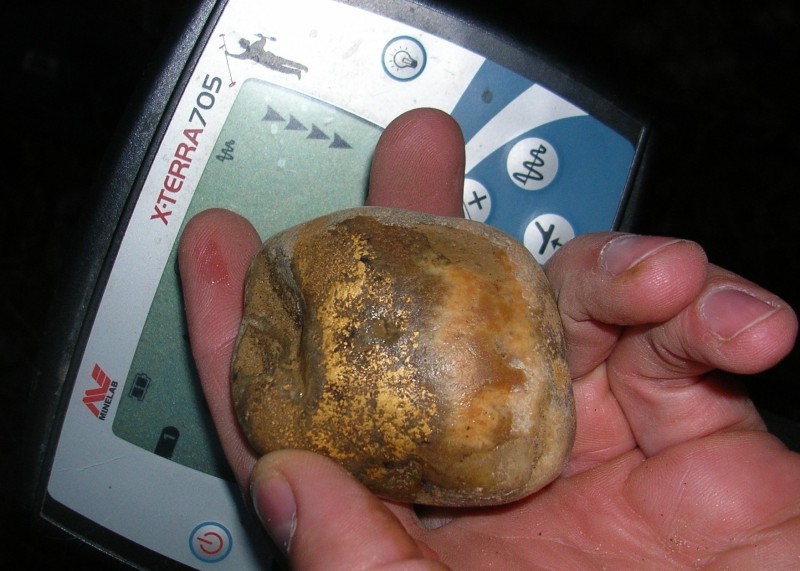
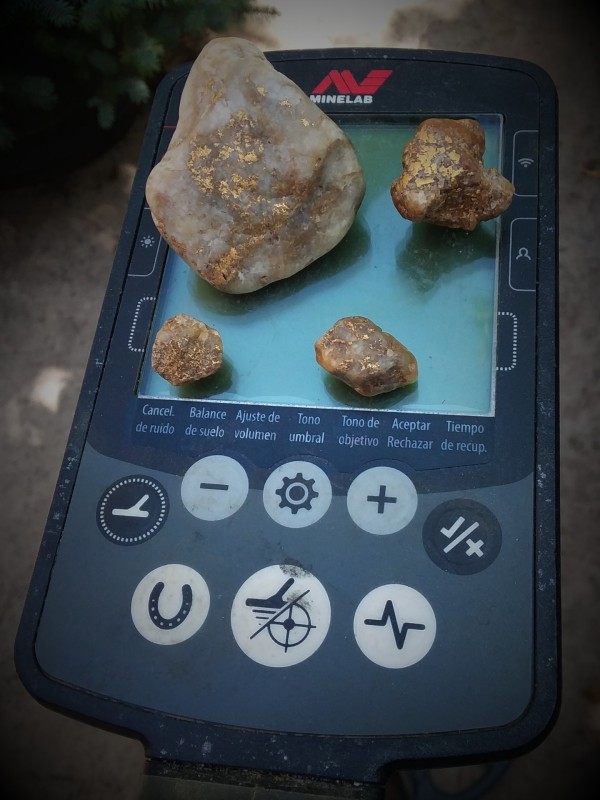
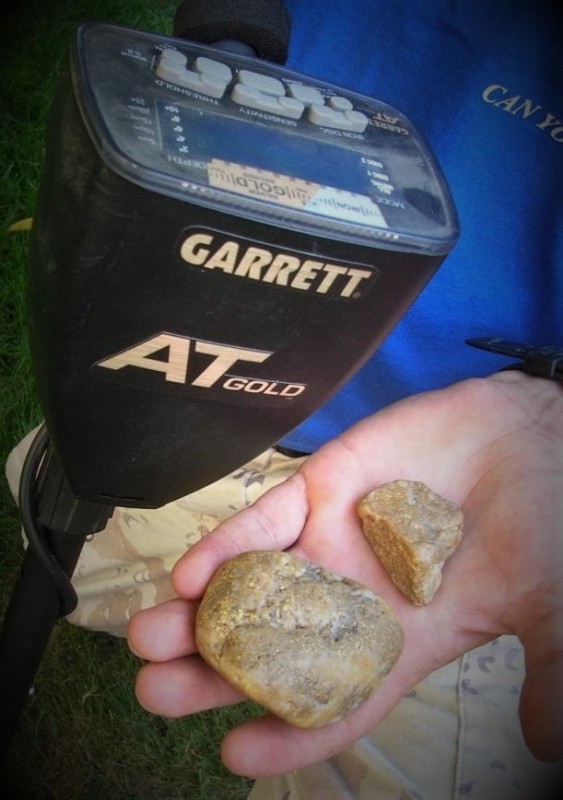
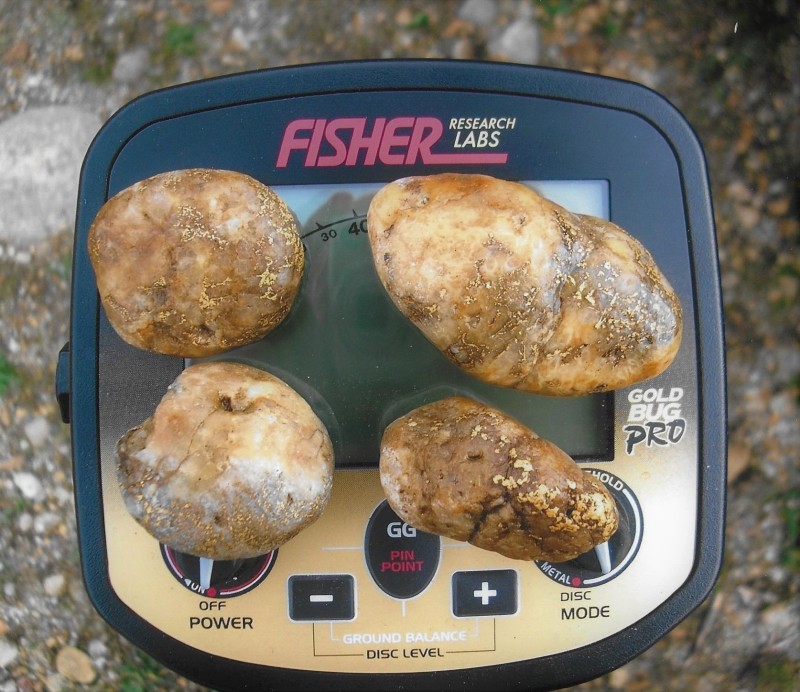

.thumb.jpg.95344db3aeef0a4c6c73420daa366191.jpg)



